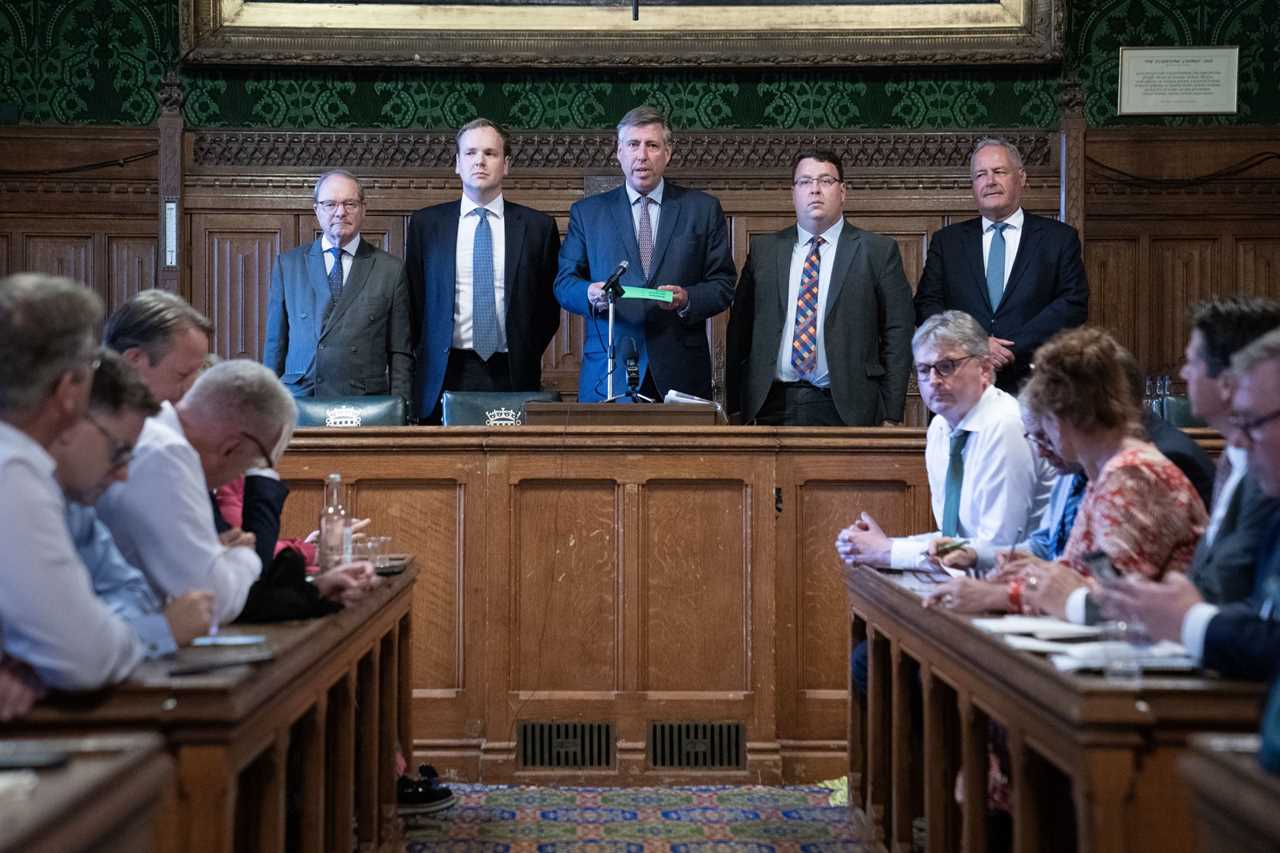THE 1922 Committee traditionally lurks behind the scenes and in the political shadows.
The committee is made up of Conservative backbench MPs – from its members to how this influential group shapes British politics, we have everything you need to know.

The 1922 Committee is the parliamentary group that sets the rules for how Conservative Party leaders are be chosen
What is the 1922 Committee?
The 1922 Committee acts as a sounding board to the Conservative Party made up of backbench MPs.
They meet weekly when the House of Commons is sitting to discuss party matters.
It allows less senior MPs to air concerns and share their constituency work as well as coordinate legislative agendas.
Known as “The 22”, members also hold a monthly meeting with the party leader to update them on the opinions of the party.
Since 2010, frontbenchers have been given an open invitation to attend meetings too, where they can appear should they want to address the rank and file MPs.
The Committee, formerly known as the Conservative Private Members’ Committee, assesses and organises ballots on leadership challenges — meaning its power, when called upon, can be huge.
For example, they are sent in at times of crisis to tell prime ministers to step down.
In December 2018, chair Sir Graham Brady received enough votes to bring a motion of no confidence against Theresa May.
The move ultimately failed, with May winning with a majority of 83, with 200 Conservative MPs voting for her to remain, and 117 voting against her.
However, on May 24, 2019, Mrs May resigned her position, a decision triggered by a meeting with Brady who warned her of a new no-confidence vote.
Who are the members of the 1922 Committee?
The 1922 Committee has 18 executive members who organise weekly meetings and other business.
They earned the nickname “men in suits” or “men in grey suits” in the 1980s after prompting the resignation of Margaret Thatcher.
Committee Chair Sir Graham Brady is currently in charge.
Here’s a list of current executive members:
- Sir Graham Brady (Chair)
- William Wragg (Joint Vice-Chair)
- (Joint Vice-Chair to be elected today)
- Bob Blackman (Joint Executive Secretary)
- Gary Sambrook (Joint Executive Secretary)
- Sir Geoffrey Clifton-Brown (Treasurer)
- Aaron Bell
- Miriam Cates
- Jo Gideon
- Richard Graham
- Chris Green
- Robert Halfon
- Andrew Jones
- Tom Randall
- David Simmonds
- John Stevenson
- Martin Vickers
How does the 1922 Committee carry out leadership challenges?
Unless the leader steps down voluntarily, a leadership challenge usually begins with a vote of no confidence being called.
MPs dissatisfied with their party’s current leadership can submit no-confidence letters to the committee to express their disapproval.
A vote of no-confidence is triggered when 15 per cent of Tory MPs write a letter to the 1922 Committee chairman.
With 360 Tory MPs, it currently takes 54 letters to trigger a vote.
If it comes to it, the vote takes place in the form of a secret ballot where all Tory MPs vote.
The Prime Minister of the day needs to secure at least half of their votes plus one to stay in power.
The threshold for a vote of no confidence was last reached in June 2022, for Boris Johnson who resigned a month later.
And before that, in 2003, when 25 MPs wrote to spark a vote on then leader Iain Duncan Smith, who was ousted a day later.
Where does the 1922 Committee get its name from?
The 1922 Committee was actually founded in 1923.
But its name comes from a famous meeting the previous year in which Conservative MPs called for the party to pull out of the coalition with the Liberals, led by PM David Lloyd George.
This move triggered a General Election which the Conservatives won.
The committee first started out as a private dining club but quickly expanded, and by 1926 all Conservative backbench MPs were permitted to be members.






